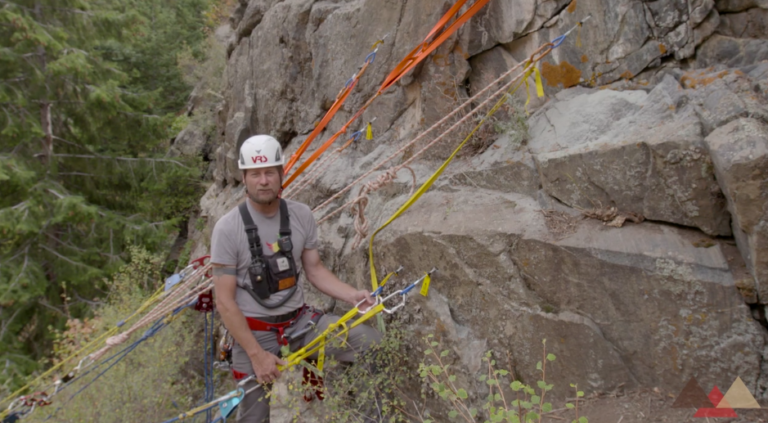Highline systems are critical for rope rescue operations in challenging terrains and popular climbing areas. They demand advanced rigging skills, meticulous planning, and specialized equipment to ensure safety and efficiency.
Key Components of Highline Systems
- Building Highlines
- Highline construction requires thorough knowledge of rigging principles and safety measures. It is crucial to use the right equipment and follow best practices to create reliable and secure highlines (Rigging Lab Academy).
- Balancing Act
- Highline systems in rescue operations parallel the challenges of everyday life. Maintaining balance, control, and precision are essential for successful outcomes (Rigging Lab Academy).
- A Frame | Quad Bundle Highline
- A floating A-frame in a quad system offers stability and versatility in horizontal rigging. This setup is beneficial for various rescue scenarios, allowing for efficient and safe operations (Rigging Lab Academy).
- English Reeve System
- The Petzl REEVE carriage pulley simplifies highline setups by reducing equipment needs and height clearance. It is an efficient solution for complex rescue situations, providing a reliable method for managing loads and tensions (Rigging Lab Academy).
- Basic Highline System with Pulleys
- Highline operations involve significant complexity and risk, requiring advanced rigging skills. Key components include pulleys, ropes, and mechanical advantage systems that ensure safe and effective rescues (Rigging Lab Academy).
Detailed Components
- Anchors and Mainline Systems: Effective highline systems rely on robust anchors and mainline setups. Anchors must be secure and capable of handling the loads and forces exerted during rescues (Rigging Lab Academy) (Rigging Lab Academy).
- Mechanical Advantage Systems: These systems are essential for tensioning highlines and managing loads. Understanding the mechanics of pulleys and prusiks is crucial for safe and efficient operations (Rigging Lab Academy).
- Tensioning Techniques: Proper tensioning ensures the stability and functionality of highline systems. Techniques such as the use of shock absorbers and load cells help manage forces and reduce the risk of failure (Rigging Lab Academy).
Equipment and Gear Recommendations
To effectively set up and use highline systems, specific gear is essential. Here are some recommended products available from CMC and Petzl:
- Pulleys and Carriage Systems:
- Petzl REEVE Carriage Pulley: Simplifies highline setups. Purchase here.
- CMC ProSwivel Pulley: Offers high efficiency and smooth operation. Purchase here.
- Ropes and Webbing:
- CMC Static Rope: Durable and ideal for highline systems. Purchase here.
- Petzl Parallel 10.5 mm Rope: Strong and versatile for various rigging needs. Purchase here.
- Anchoring Equipment:
- CMC Anchor Plate: Essential for creating secure anchor points. Purchase here.
- Petzl COEUR Stainless Steel Hanger: Reliable for creating secure anchor points. Purchase here.
- Additional Accessories:
- Petzl Am’D Carabiner: Lightweight and strong carabiner for various connections. Purchase here.
- CMC Rescue 8: Versatile descent control device. Purchase here.
Summary
Highline systems in rope rescue are intricate and require a high level of skill and precision. By understanding the various components and principles, rescue teams can perform efficient and safe operations in challenging environments. For detailed information and gear, visit Rescue Response Gear and the Rigging Lab Academy.
Peace on your Days
Lance










